Discover Quan Su Pagoda - A spiritual landmark in the heart of Hanoi
Located in the heart of Hanoi’s Old Quarter, Quan Su Pagoda is a must-visit destination for anyone exploring the city’s rich Buddhist heritage. Famous for its peaceful courtyards, intricate wooden architecture, and centuries-old statues, the temple offers both cultural insight and a serene escape from bustling streets. Visitors can explore its historic halls, learn about Buddhist traditions, and discover hidden corners often missed by first-time travelers. Whether you’re planning a spiritual journey, a photography adventure, or simply a cultural day out, Quan Su Pagoda provides an unforgettable Hanoi experience.
Explore Quan Su Pagoda - Hanoi’s Historic Buddhist Sanctuary
Quan Su Pagoda is more than just a temple, it’s a spiritual and cultural landmark in the heart of Hanoi. Known for its serene courtyards, intricate wooden architecture, and centuries-old statues, the temple offers visitors a unique glimpse into Vietnam’s Buddhist traditions. Perfect for both first-time travelers and those seeking a peaceful retreat, Quan Su Pagoda provides a memorable experience filled with history, art, and tranquility.
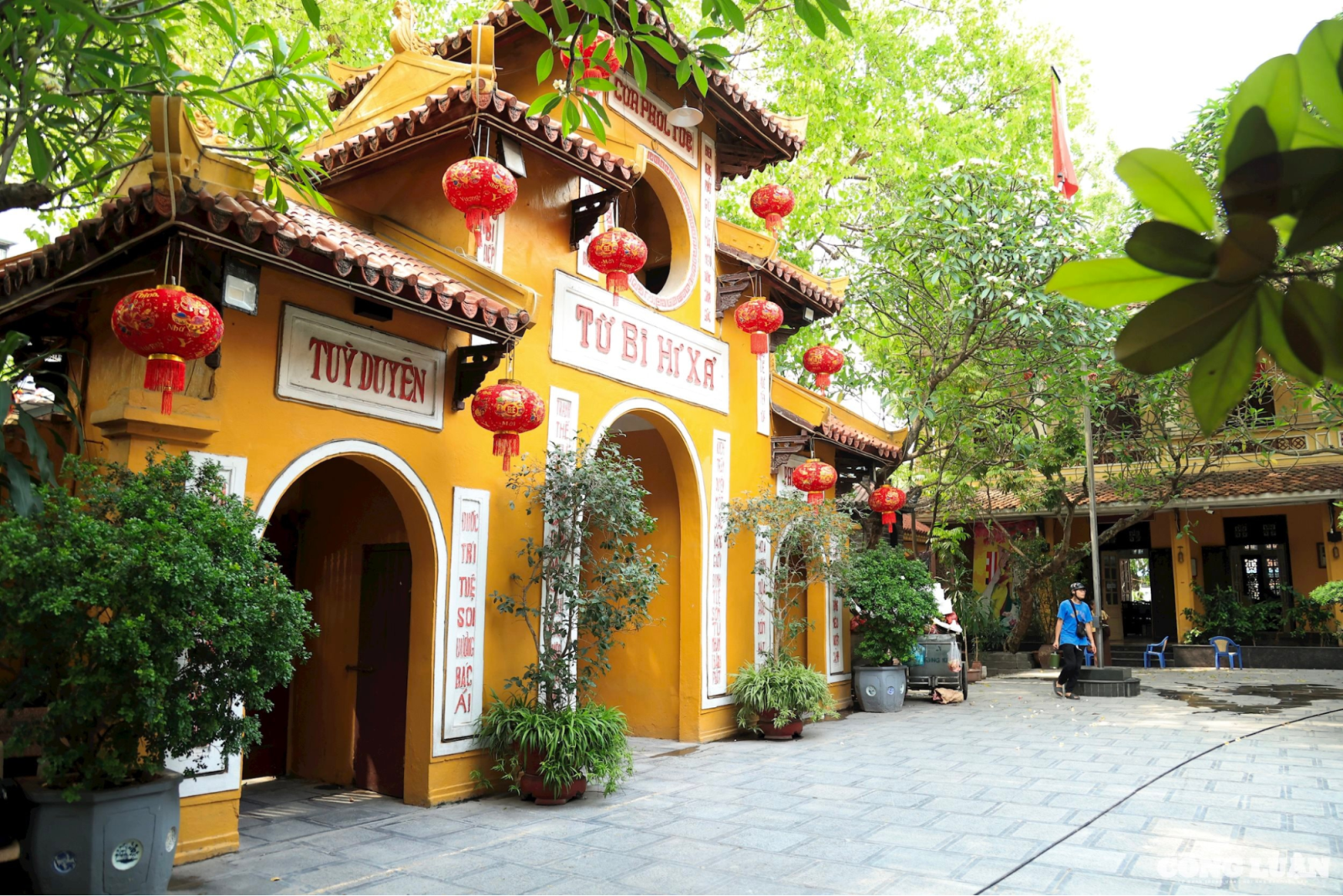
Explore Quan Su Pagoda - Hanoi’s Historic Buddhist Sanctuary
Location
Quan Su Pagoda is located at 73 Quan Su Street, Hoan Kiem District, Hanoi, right in the city center. Its prime location makes it easy for travelers to reach whether on foot, by taxi, or by motorbike. From Hoan Kiem Lake, it’s just about a 10-minute drive, and the temple is surrounded by other popular attractions such as the Hanoi Opera House and St. Joseph’s Cathedral.
Opening hours and best time to visit
Quan Su Pagoda is open daily from 7:00 AM to 5:00 PM, welcoming both worshippers and travelers. The temple is free to enter, though small donations are appreciated to support its upkeep.
The best time to visit is early in the morning, when the atmosphere is most peaceful and ideal for quiet reflection or photography. Late afternoons also offer a calm experience with softer lighting. If you’re interested in cultural immersion, visiting during Buddhist holidays or festivals allows you to witness traditional rituals, though it can be more crowded.
History and significance of Quan Su Pagoda
The origins of Quan Su Pagoda can be traced back to the 15th century during the Lê Dynasty. At that time, Hanoi, then known as Thăng Long was the political and cultural heart of Đại Việt. The temple was established to receive and accommodate envoys and diplomats from neighboring countries who came to pay tribute to the royal court. To ensure these foreign delegations could continue their spiritual practices, the pagoda was built as a place of Buddhist worship within the capital.
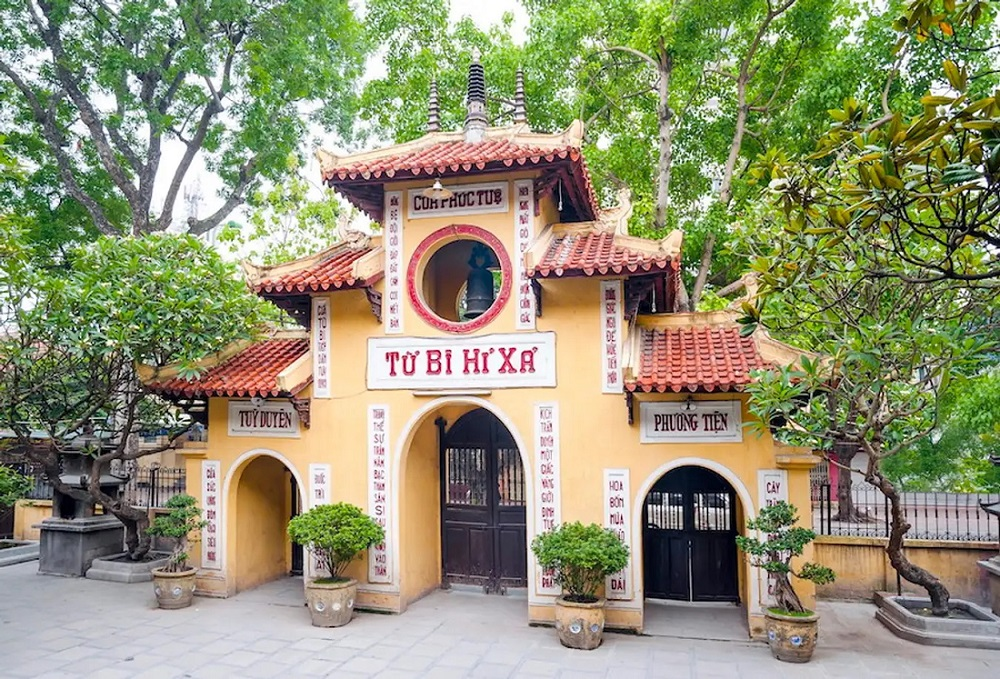
History and significance of Quan Su Pagoda
The name “Quan Su”, meaning “embassy,” reflects this diplomatic role, making the temple unique among Hanoi’s religious sites. Unlike many pagodas built primarily for local worship, Quan Su Pagoda stood at the intersection of politics, religion, and international relations, symbolizing both the openness and the spiritual depth of Đại Việt.
Through centuries of wars, dynastic changes, and urban growth, the pagoda has been restored multiple times yet continues to preserve its ancient charm. In the modern era, it holds even greater importance as the headquarters of the Vietnam Buddhist Sangha, the governing body of Vietnamese Buddhism. This dual role as both a sacred place of worship and an administrative center, cements its significance in the country’s religious and cultural history.
For visitors today, Quan Su Pagoda is not merely an architectural relic but a living testament to Vietnam’s enduring Buddhist heritage and its centuries-long tradition of diplomacy and hospitality.
Read more: Explore Trang Tien Plaza Hanoi - Shopping, dining & attractions
Stunning architecture and art at Quan Su Pagoda
Quan Su Pagoda is not only a spiritual landmark but also a showcase of Vietnamese Buddhist architecture and art. Blending the elegance of traditional design with the dignity of a national religious center, the pagoda offers visitors a glimpse into centuries of devotion, craftsmanship, and cultural pride.
Quan Su Pagoda’s blend of tradition and modernity
Quan Su Pagoda was first built in the 15th century, but it has undergone several renovations, with the most significant in 1934. Thanks to these restorations, the pagoda today reflects a unique blend of old and new.
The traditional side can be seen in its curved tiled roofs, red brick walls, and intricate wooden carvings, all hallmarks of northern Vietnamese Buddhist temples. At the same time, the layout was redesigned to be more open and spacious, ensuring convenience for large gatherings, ceremonies, and the daily practices of the Buddhist Sangha.
This combination makes Quan Su Pagoda not only a heritage site of ancient beauty but also a living, functional center of worship that continues to serve the needs of the community in modern times.
The grand main hall of Quan Su Pagoda
At the heart of Quan Su Pagoda lies its grand main hall (chính điện) - the most striking structure within the temple complex. From the outside, the hall stands out with a two-tiered curved roof covered in dark red tiles, crowned with dragon and phoenix motifs, symbols of prosperity and sacred power in Vietnamese culture.
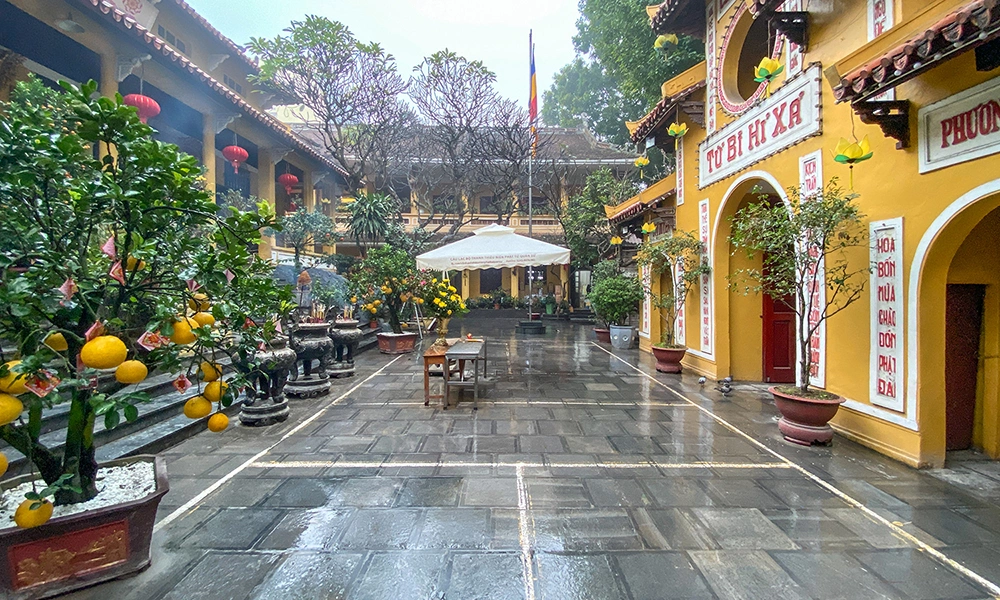
The grand main hall of Quan Su Pagoda
Inside, the atmosphere is both solemn and serene. The hall houses a system of gold-lacquered statues of Buddhas, bodhisattvas, and arhats, each meticulously crafted to reflect the elegance of traditional Buddhist sculpture. Incense smoke lingers in the air, mixing with the golden glow of candles and offerings, creating a sacred space where worshippers can find peace of mind.
The three-entrance gate and peaceful courtyard
The first impression of Quan Su Pagoda begins at its three-entrance gate (tam quan), not monumental like those of other famous temples, but uniquely elegant and understated. This simplicity reflects the original role of the pagoda as a place for receiving foreign envoys, where formality and solemnity mattered more than grandeur.
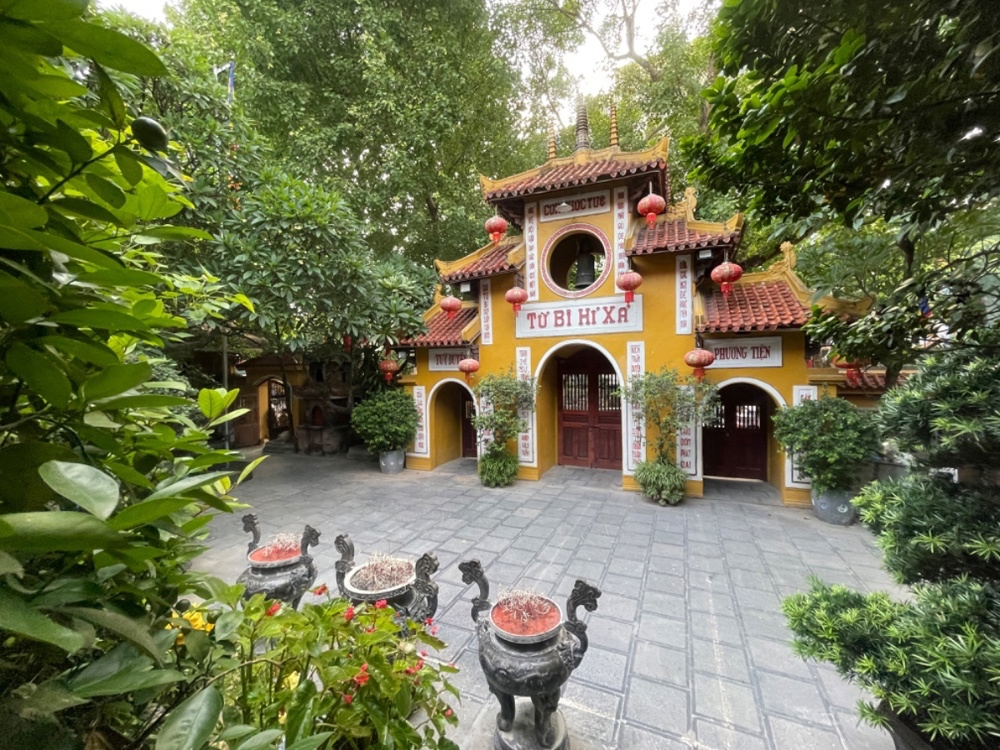
The three-entrance gate and peaceful courtyard
Stepping through the gate feels like crossing a threshold between two worlds: the noise of Hanoi’s bustling streets fades instantly, giving way to an atmosphere of peace. The brick-paved courtyard, shaded by ancient trees and dotted with bonsai and ornamental plants, creates a living garden where silence and greenery embrace visitors.
This transition is what makes Quan Su Pagoda special in the very heart of Hanoi, it offers a rare “breathing space” where locals and travelers alike can pause, reflect, and reconnect with calmness before entering the sacred main hall.
Intricate wooden carvings at Quan Su Pagoda
One of the most captivating artistic features of Quan Su Pagoda lies in its wooden architecture. From the main hall to the altars and supporting beams, the woodwork is decorated with elaborate carvings that reflect the skill and devotion of Vietnamese craftsmen.
The motifs are not only decorative but also deeply symbolic:
- Dragons and phoenixes represent prosperity, harmony, and sacred power.
- Lotus flowers symbolize purity and enlightenment in Buddhist philosophy.
- Cloud patterns and waves bring a sense of movement, connecting heaven and earth.
These carvings, meticulously chiseled by hand, glow warmly under the dim light of the temple, creating a sense of timeless beauty. More than art, they are a reminder of the spiritual messages embedded in every detail of Vietnamese Buddhist architecture.
Sacred statues and altars of Quan Su Pagoda
Inside Quan Su Pagoda, the sacred atmosphere is elevated by its system of statues and altars, each arranged with solemnity and deep symbolism. The main hall houses gold-lacquered statues of the Buddha, bodhisattvas, and arhats, crafted in traditional Vietnamese style with delicate lines and radiant colors.
Among the most revered are:
- Shakyamuni Buddha at the central altar, symbolizing enlightenment.
- Avalokiteshvara (Quan Âm), embodying compassion and mercy.
- Ksitigarbha (Địa Tạng), protector of souls and guide of the departed.
Each altar is adorned with incense burners, lotus-shaped lamps, and offerings, blending devotion with artistry. When incense smoke curls upward, the statues seem to come alive, filling the hall with an aura of reverence and peace.
Things you might not know about Quan Su Pagoda
Quan Su Pagoda is well-known as the headquarters of Vietnamese Buddhism, but hidden behind its solemn façade are stories and features that even many Hanoians might not know.
The headquarters of Vietnamese Buddhism
Few visitors realize that Quan Su Pagoda is not only a sacred place but also the official headquarters of the Vietnam Buddhist Sangha. From here, the highest-ranking monks and nuns guide the direction of Buddhism across the country - organizing nationwide retreats, hosting international Buddhist delegations, and preserving Vietnam’s spiritual heritage.
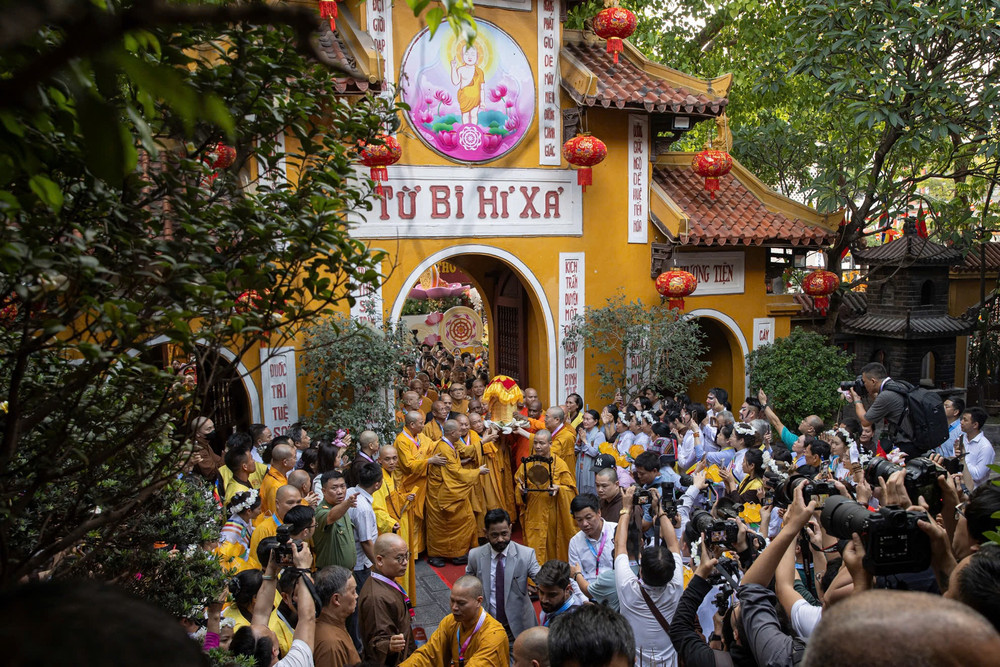
The headquarters of Vietnamese Buddhism
This role makes the pagoda a unique blend of the spiritual and the institutional. While worshippers come to burn incense and pray, within its halls decisions are made that influence Buddhist life throughout Vietnam. For travelers, standing here means standing at the very nerve center of Vietnamese Buddhism.
Rare artistic and historical treasures
Inside Quan Su Pagoda lies a museum-like collection of sacred art, yet one that remains little known to the casual visitor. The golden lacquered statues of Shakyamuni Buddha, Avalokiteshvara, and Ksitigarbha radiate solemnity, while the wooden altars glow with intricate dragon and lotus carvings.
Among these treasures are centuries-old steles and bells bearing inscriptions of dynasties long gone, silent witnesses to history. What makes them special is that they are not displayed behind glass, but remain part of daily worship. For those who look closely, every carving and artifact reveals a hidden dialogue between faith, history, and art.
A living spiritual space
Unlike many historic temples that feel more like open-air museums, Quan Su Pagoda breathes with life. At dawn, the echo of monks chanting sutras resonates through the courtyards. Locals arrive with incense and offerings, whispering prayers for health and peace. In quiet corners, practitioners sit in meditation, embodying traditions passed down for centuries.
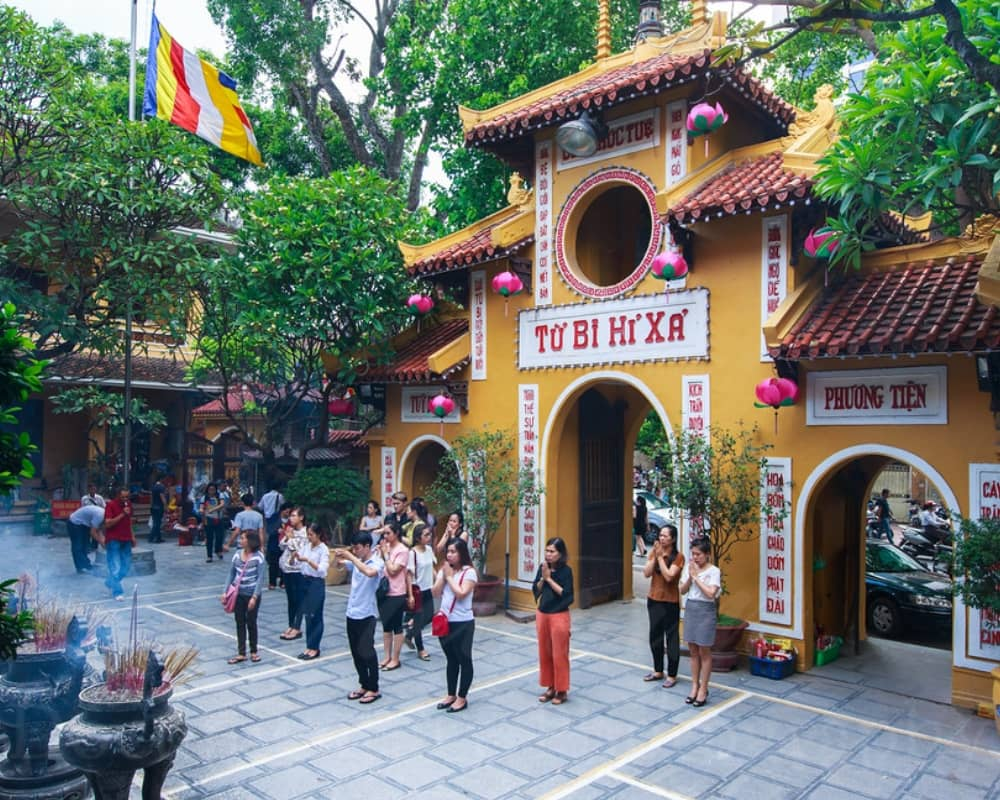
A living spiritual space
This rhythm of daily devotion gives travelers something rare: a chance to experience Buddhism as it is practiced, not just remembered. It is this vitality - the sense that the pagoda is still deeply rooted in the spiritual lives of Hanoi’s people, that makes Quan Su not only a place to visit, but a place to feel.
A serene escape in central Hanoi
Surrounded by the constant honking and rush of Tran Hung Dao Street, Quan Su Pagoda offers an unexpected pocket of serenity. The moment you step inside its three-entrance gate, the noise of the city seems to dissolve, replaced by the fragrance of incense and the gentle rustle of leaves.
The brick courtyard, shaded by bonsai and ancient trees, invites visitors to pause and breathe. Here, the contrast between chaotic Hanoi outside and the calm refuge within is striking - a reminder that tranquility can exist in the most surprising places. For travelers, it is a rare opportunity to find stillness at the heart of Vietnam’s bustling capital, a sanctuary where body and mind alike can rest.
Nearby attractions of Quan Su Pagoda Hanoi
Thanks to its central location on Tran Hung Dao Street, Quan Su Pagoda is within easy reach of many of Hanoi’s most famous cultural and historical landmarks. After visiting the temple, you can easily continue your journey to explore these nearby attractions:
Hoa Lo Prison (Maison Centrale)
.png)
Hoa Lo Prison (Maison Centrale)
Only a short walk from Quan Su Pagoda, Hoa Lo Prison is one of Hanoi’s most important historical sites. Built by the French in the late 19th century, it once held many Vietnamese revolutionaries during the struggle for independence. Today, the museum tells moving stories through artifacts, reconstructed cells, and exhibitions. A visit here offers a deeper understanding of Vietnam’s resilience and history, contrasting the serenity of the pagoda with the city’s turbulent past.
Vietnamese Women’s Museum
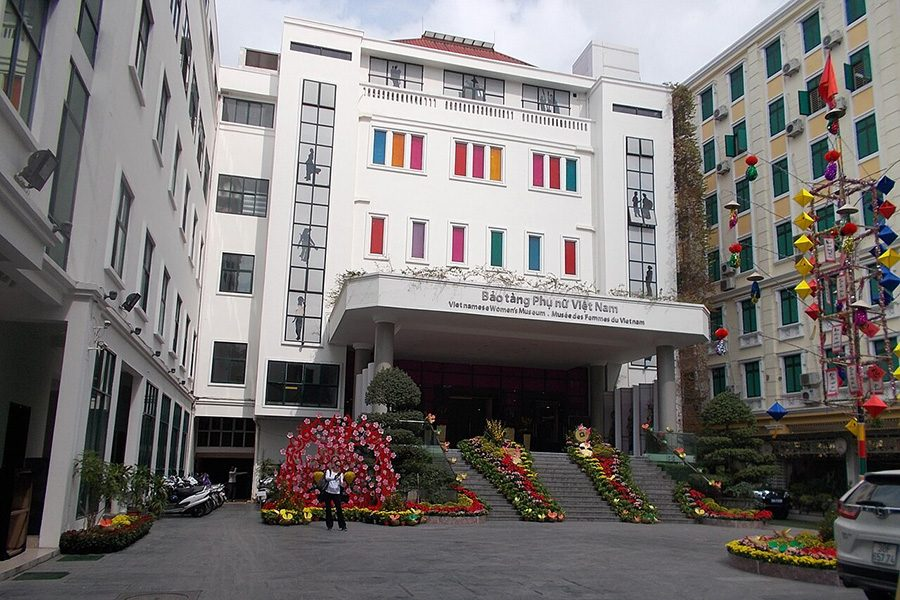
Vietnamese Women’s Museum
Just a few minutes away, the Vietnamese Women’s Museum is a fascinating stop that celebrates the vital role of women in the nation’s culture, history, and daily life. Exhibits showcase everything from traditional costumes and crafts to stories of women’s contributions in wartime. With its engaging displays and multimedia presentations, the museum offers a unique perspective often overlooked in guidebooks, making it a meaningful complement to your spiritual visit at Quan Su Pagoda.
Hoan Kiem Lake
Located within walking distance, Hoan Kiem Lake is the symbolic heart of Hanoi and a favorite gathering spot for both locals and travelers. Surrounded by shaded pathways, the lake is perfect for a peaceful stroll or morning exercise. Don’t miss Ngoc Son Temple, perched on a small island and reached by the iconic red bridge. From sunrise tai chi to evening lights reflecting on the water, the lake embodies Hanoi’s charm and balance of tradition and modern life.
Hanoi Opera House
.png)
Hanoi Opera House
A short drive from Quan Su Pagoda brings you to the stunning Hanoi Opera House, an architectural masterpiece built during the French colonial era. Inspired by Paris’s Palais Garnier, it remains one of the city’s most elegant landmarks. Inside, performances of classical music, opera, and ballet continue to enchant audiences. Even if you don’t attend a show, the grand facade and surrounding square are worth a visit, offering a glimpse into Hanoi’s cultural sophistication and colonial heritage.
Hanoi Old Quarter
For a lively contrast to the calm of Quan Su Pagoda, head to the Hanoi Old Quarter, just a few minutes away. With its maze of narrow streets, buzzing motorbikes, and endless street food stalls, the Old Quarter is the city’s beating heart. Each street traditionally specialized in a craft, from silversmiths to herbal medicine. Today, it’s a vibrant mix of shops, cafes, and cultural sites, perfect for exploring on foot and soaking in the authentic Hanoi atmosphere.
Read more: Hanoi weather by month: Everything you need to know before visiting
Where to stay Near Quan Su Pagoda
Choosing accommodation close to Hanoi’s cultural highlights makes your journey smoother and more enjoyable. Staying just a short ride from Quan Su Pagoda allows you to easily combine spiritual exploration with visits to nearby attractions like Hoan Kiem Lake, the Old Quarter, or the Vietnamese Women’s Museum, all without spending too much time on the road.
For travelers who want both convenience and an authentic taste of Hanoi, La Mejor Hotel & Sky Bar is a perfect match. Just 10-15 minutes from Quan Su Pagoda, the hotel’s prime location means you can start your mornings with temple visits and end your evenings by the serene West Lake or the vibrant Old Quarter.
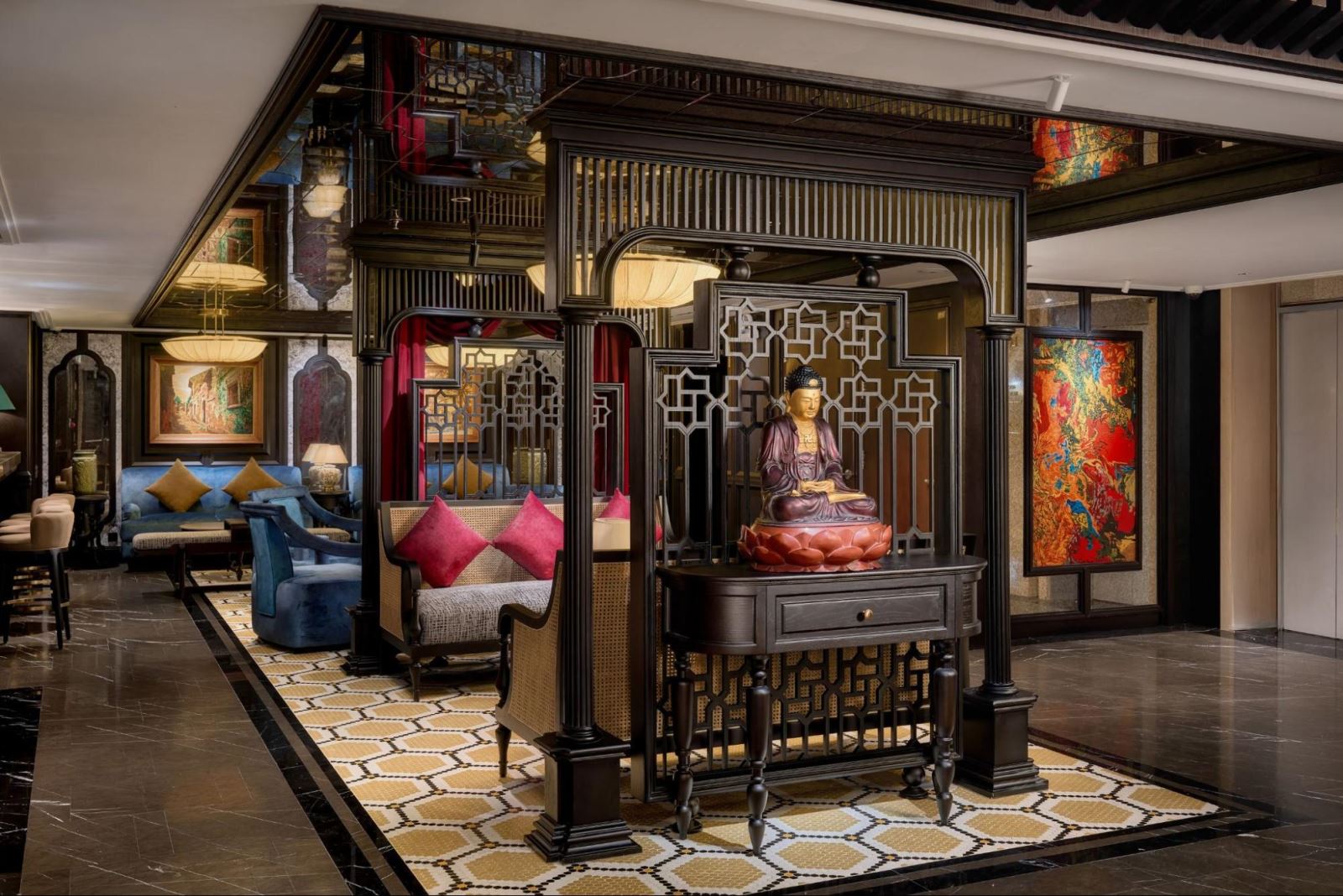
Where to stay Near Quan Su Pagoda
Beyond its location, La Mejor Hotel wins hearts with elegant rooms inspired by French colonial charm, a rooftop infinity pool offering sweeping city views, and a tranquil spa where you can unwind after a day of discovery. More than a place to sleep, it’s a haven where cultural immersion and modern comfort meet, making every moment of your Hanoi stay truly memorable.
Quan Su Pagoda is not only a spiritual landmark but also a cultural treasure nestled in the heart of Hanoi. Visiting this temple gives you a chance to step away from the city’s hustle, embrace serenity, and discover centuries of Buddhist heritage. To make your trip even more seamless, choosing the right place to stay nearby is just as important as planning your sightseeing.
If you’re ready to explore Hanoi with ease and comfort, book your stay at La Mejor Hotel & Sky Bar today. With its prime location, refined design, and thoughtful services, La Mejor Hotel promises to be the perfect companion for your journey.
More information
Best accommodation Hanoi Old Quarter: Hotel recommendations and tips for booking
Hanoi weather by month: Everything you need to know before visiting
8 Best Hanoi Restaurants in 2025 for Authentic Vietnamese Dining
Explore Trang Tien Plaza Hanoi - Shopping, dining & attractions
Hoan Kiem Lake: Complete guide to Hanoi’s iconic landmark